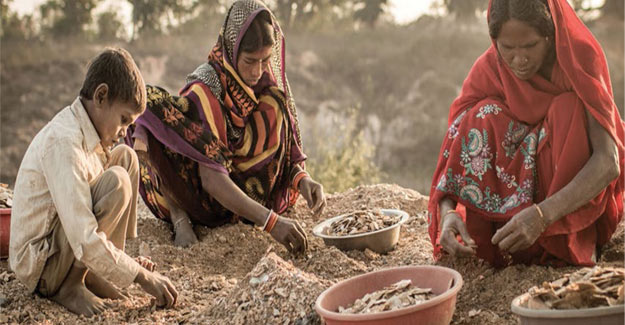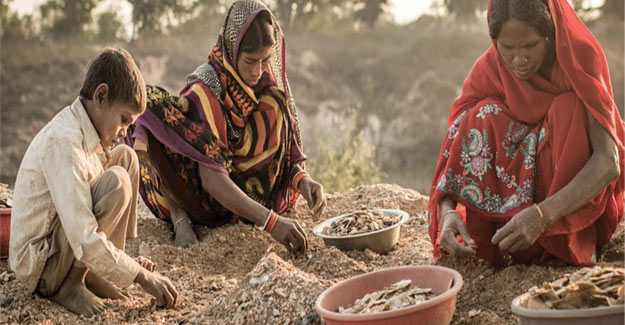
Countries Still To Eliminate Child, Forced Labour In Cotton, Textile And Clothing Sector
The US Department of Labor released two reports that shine a spotlight on child labour and forced labour in nations around the world: the eighth edition of the List of Goods Produced by Child Labour or Forced Labour and the 17th annual edition of the Findings on the Worst Forms of Child Labour.
These reports, prepared by the Department's Bureau of International Labor Affairs (ILAB), highlight specific sectors in which child labour or forced labour persists in foreign nations, and describe the progress some countries have made in upholding their international commitments to eliminate these practices.
Uzbekistan, Paraguay no longer use child labour in their cotton fields
An important development for the textile and apparel industry is the removal of Uzbekistan and Paraguay from the list of countries using child labour in cotton cultivation. However, Uzbekistan continues to use forced labour, according to the report. Renowned brands across the world have shunned the use of Uzbek cotton for this reason. As the Uzbek government stops forced labour in cotton cultivation, the ban on its cotton could be revoked.
Uzbekistan wants to consume all of its cotton, converting it into textiles and apparel, for both the domestic and export markets. With traceability in the supply chain becoming the order of the day, the Uzbek government will need to work seriously to eliminate child and forced labour from its textile and apparel supply chain, to be able to find a place in the markets around the world.
Other countries using child labour in their cotton fields include Argentina, Azerbaijan, Brazil, Egypt, India, Kyrgyz Republic, Mali, Turkey and Zambia. Pakistan employs forced labour in its cotton fields. And child and forced labour are employed in the cotton fields of Benin, Burkina Faso, China, Kazakhstan, Tajikistan, Turkmenistan.
It is an onerous task to bring in transparency in the supply chains of these countries, and especially the Central Asian countries, that will find a ready market in China for their cotton. China will soon begin to import huge amounts of cotton again. According to the US Secretary of Labor Alexander Acosta, "These reports represent one of the Department of Labor's key contributions to the global effort to protect workers in the United States and around the world by defending the rights of all people to live free of child labour, forced labour, human trafficking, and modern slavery."
Forms of slavery found in textiles and apparel industries of many countries
India and Nepal were found to be using child labour and forced labour in the embellished textiles segment. Child labour in the apparel sector was found in Bangladesh, Burma and Turkey. According to the report, Brazilian, Chinese and Malaysian apparel factories were employing forced labour. And child labour and forced labour in apparel factories were found in Argentina, India, Thailand and Vietnam.
Uzbekistan employs forced labour in silk cocoon harvesting. While India was found to be using child labour in silk fabric and thread industries. Bangladesh, Cambodia, China, Vietnam - these countries' textile manufacturing is tainted with child labour. North Korea's textile industry uses forced labour. In handwoven textiles, Ethiopia was found to be using forced labour. Child labour was also found in Bangladesh's jute sector. Whereas child labour was found to be employed in India's yarn sector.
In the agricultural sector, cotton ranks second in the use of child and forced labour in the world - 17 countries were found to be employing such labour in their fields.
In manufacturing, apparel ranks second in the number of countries that use these forms of slavery in their factories, after bricks, where 20 countries were found to employ child and/or forced labour. This is followed by textile and carpet industries. In the 2018 edition of the report, Myanmar and Turkey were an addition to the list of countries using child labour in the garment sector.
In Paraguay, cotton production fell, and so did use of child labour
In 2018, USDOL determined that the incidence of child labour in the production of cotton in Paraguay has been significantly reduced. The main reason for this is the significant reduction of cotton cultivation in Paraguay. The report suggests that if cotton cultivation were to pick up in Paraguay, incidence of child labour could go up too. The report has warned the Paraguay government to closely monitor the cotton sector to ensure that any increase in cotton production does not result in an increase in child labour. The report also suggests better implementation of labour laws to prevent such incidence.
Multi - stakeholder approach eliminates child labour in Uzbek cotton fields
In 2018, USDOL determined that the incidence of child labour in the production of cotton in Uzbekistan has been significantly reduced. USDOL placed child labour in the production of cotton from Uzbekistan on the List in 2009, based on 22 sources dating from 2002 to 2008. Sources indicated that children as young as age seven were systematically mobilised by their schools for labour in the cotton harvest.
In 2009, children were reportedly subject to coercive and unfree recruitment practices, as schools were closed during the harvest and children were mobilised by their schools to pick cotton. Children who refused to participate in the cotton harvest were also reportedly punished with expulsion from school, being held back in school, or receiving bad grades. Children's freedom of movement was limited during the time of the harvest. Some children were reportedly forced to live in makeshift accommodations in schools, where they slept on concrete floors and were given inadequate food. In addition, children commonly either were not paid, were paid extremely low wages, or had wages withheld for food and housing costs during the harvest.
Since 2009, child labour in cotton picking has remained on the List. Although reporting indicated that the scope of the child labour problem had greatly decreased by 2015, there continued to be reports of systematic mobilisation of children.
However, current reports indicate that the incidence of child labour in the sector has been significantly reduced to isolated incidents. For the 2017 harvest, reporting from independent activists and private citizens documented only a small number of cases of child labour.
In some of these cases, children were picking cotton as part of a school group, in what appeared to be mobilisation of a class of children. Unlike in previous years, upon receiving allegations of child labour from independent activists, the government made efforts to investigate and remediate such cases.
In addition, ILO monitoring in 2017 identified 12 children ages 10 to 14 engaged in child labour in one field in Karakalpakstan. In this case, the children were immediately removed from the field, and the local mahalla leader, the local Ministry of Education representative, the district prosecutor, and the district hokim each participated in investigation of the issue. ILO monitors concluded that the case was an isolated incident. The Uzbek government's Coordination Council-led monitoring separately identified 18 children engaged in child labour in the cotton harvest. The government of Uzbekistan issued administrative penalties for using child labour.
Based on this reporting, the evidence available indicates that child labour in the production of cotton has been reduced to isolated incidents.
The removal of child labour in the production of Uzbek cotton from the List is a result of targeted action, the collection and reporting of credible information, and the investment of significant resources on the part of the government, the ILO, Uzbek and international civil society groups, and the US government. Working together, these actors have achieved a significant reduction in the incidence of child labour in the sector.
The road ahead-Full elimination of child and forced labour in cotton production
Despite the significant reduction in the use of child labour in cotton production achieved through these efforts, continued improvement is necessary to ensure that the use of adult forced labour is also addressed in the sector and progress continues toward the full elimination of child labour. Evidence indicates that more than 300,000 adults were forced to pick cotton in the 2017 harvest.
The report recommends changes in government policies that incentivise the use of child and forced labour, better implementation of labour laws, attracting labour voluntarily to the farms by creating better working and earning conditions, continued ILO and NGO monitoring, etc.
Slavery free world by 2030
At the global level, the international community has set a goal of eradicating all forms of child labour by 2025, and all forced labour by 2030. Recent ILO estimates show there are still over 152 million child labourers - one in every ten children - and 25 million forced labourers worldwide.
As reflected in the ILO's 2017 Global Estimates, the pace of decline in child labour has slowed in recent years, and the number of people in forced labour has remained high. It is estimated that, at the present pace of progress, it would take nearly 40 years to eliminate all forms of child labour.
The Findings on the Worst Forms of Child Labor, mandated by the Trade and Development Act of 2000, is the most comprehensive research product on the state of child labour worldwide. This year, the report uses more stringent criteria to assess the efforts of 132 countries and territories to address child labour. Only 14 countries - including Colombia, Paraguay, and India - met the new criteria for "Significant Advancement," which this year requires specific legal and policy labour standards to be met.
By pinpointing specific industries where child labour and forced labour occur, these reports provide vital information to governments for targeting appropriate policy responses and to businesses for directing resources to support due-diligence and risk-management systems.

Textile Excellence
If you wish to Subscribe to Textile Excellence Print Edition, kindly fill in the below form and we shall get back to you with details.








